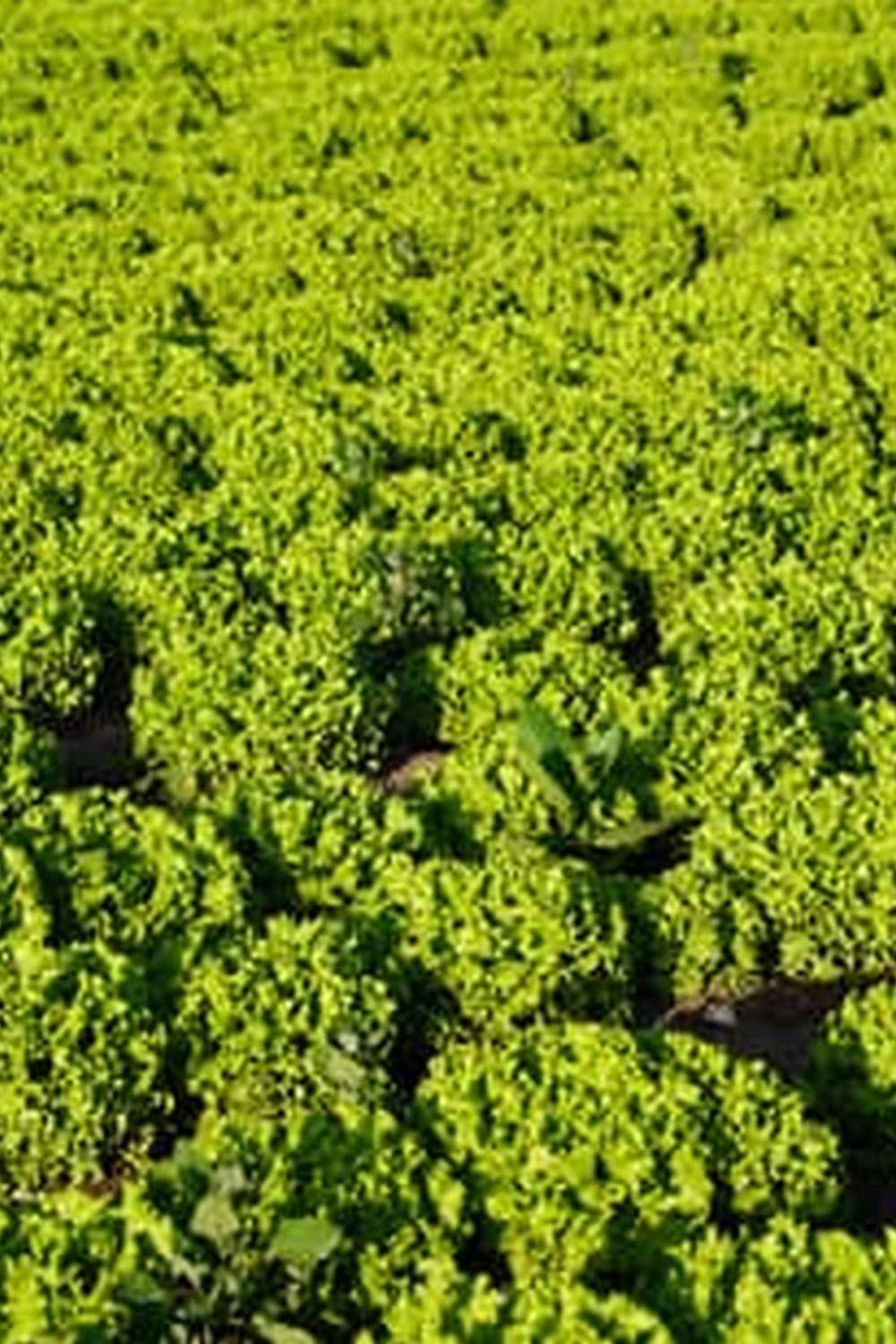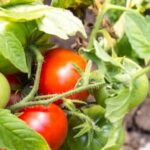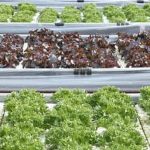Vegetable gardening, when done right, can have a positive impact on Mother Earth. By cultivating your own vegetables, you reduce the demand for industrially-farmed produce and minimize the carbon footprint caused by transportation. In this article, we will explore the benefits of vegetable gardening for both the environment and personal health. We will also discuss sustainable practices that can help reduce the environmental impact of your gardening endeavors.
When it comes to vegetable gardening, one of the first things to consider is choosing the right location for your garden. Factors such as sunlight, soil quality, and water availability can greatly affect the success of your crop. In addition to this, preparing the soil and selecting suitable vegetables for your climate and soil are essential steps in ensuring a thriving garden. As such, we will provide tips and recommendations on how to make these key decisions.
Furthermore, we will delve into planting and caring for your vegetable garden, as well as organic pest control and weed management. Harvesting and enjoying the fruits of your gardening labor is just as important as every other stage in this process; thus, we will discuss ways to maximize your yield while minimizing waste.
Lastly, we will touch upon sustainable practices for vegetable gardening that can lead to a positive long-term impact on our planet. Join us in exploring the wonderful world of vegetable gardening and its remarkable connection with Mother Earth.
Choosing the Right Location for Your Vegetable Garden
When it comes to vegetable gardening, choosing the right location for your garden is crucial for the success of your crops and for the health of Mother Earth. Here are some tips to help you select the best location for your vegetable garden:
- Sunlight: Choose a spot that receives at least 6-8 hours of direct sunlight per day. Most vegetables need plenty of sun to thrive and produce a bountiful harvest.
- Soil Quality: Look for well-drained soil with good fertility. Conduct a soil test to determine the pH and nutrient levels, and amend the soil as needed to create an optimal growing environment for your vegetables.
- Access to Water: Ensure that your chosen location has easy access to water for irrigation. Consider installing a drip irrigation system or setting up rain barrels to collect rainwater for sustainable watering practices.
Furthermore, consider the proximity to your home when choosing a location for your vegetable garden. Having easy access to your garden will make it more convenient for you to care for your plants and harvest fresh produce, while also reducing the carbon footprint associated with transportation.
By carefully selecting the right location for your vegetable garden, you can create a thriving oasis that not only benefits you and your family but also contributes positively to our beloved Mother Earth. Taking these factors into consideration will help you establish an environmentally-friendly vegetable garden that supports biodiversity and promotes sustainable practices in agriculture.
Preparing the Soil for Vegetable Gardening
When it comes to vegetable gardening, one of the most critical steps is preparing the soil. Healthy and nutrient-rich soil is the foundation for a successful vegetable garden, as it provides essential nutrients for plant growth and helps retain moisture. To start, it’s important to test the pH level of your soil to determine its acidity or alkalinity.
Most vegetables thrive in soil with a pH level between 6.0 and 7.0. You can easily test the pH level using a home testing kit available at gardening centers.
After determining the pH level, you can then start improving the soil structure by adding organic matter such as compost, well-rotted manure, or peat moss. These materials help enhance soil fertility, improve drainage, and promote beneficial microbial activity. Mixing in organic matter also enhances the soil’s ability to hold moisture during dry periods and allows air to circulate around plant roots.
In addition to adding organic matter, it’s essential to till or turn over the soil to a depth of at least 12 inches before planting your vegetable garden. This action helps loosen compacted soils, improves drainage, and promotes root penetration.
Furthermore, tilling allows for proper aeration and facilitates the incorporation of organic matter into the existing soil. By taking these steps to prepare your soil properly, you can create an optimal environment for your vegetable garden to thrive while also fostering a healthier ecosystem for Mother Earth.
| Soil Preparation Steps | Benefits |
|---|---|
| Test soil pH | Determines acidity/alkalinity |
| Add organic matter | Enhances fertility and improves drainage |
| Till or turn over the soil | Loosens compacted soils and promotes root penetration |
Selecting the Best Vegetables for Your Climate and Soil
When it comes to vegetable gardening, selecting the right vegetables for your climate and soil is essential for a successful harvest. Different vegetables thrive in different environments, so it’s important to choose varieties that are well-suited to your specific growing conditions. By selecting the best vegetables for your climate and soil, you can ensure a bountiful harvest while also minimizing the need for excessive watering, fertilizers, and other inputs.
Understanding Your Climate
Before choosing which vegetables to grow in your garden, it’s important to understand your local climate. Some vegetables prefer cooler temperatures, while others thrive in heat. Consider the average temperature range, frost dates, and length of the growing season in your area. This information will help you choose vegetables that are best suited to your climate and will have the highest chance of success.
Assessing Your Soil
In addition to considering your climate, it’s crucial to assess the quality of your soil. Different types of soil have varying levels of fertility and drainage capabilities. Conduct a soil test to determine its pH level and nutrient content. Certain vegetables may perform better in acidic or alkaline soils, so understanding your soil’s composition will guide you in selecting the best vegetables for your garden.
Choosing Suitable Vegetables
Once you’ve determined both your climate and soil conditions, you can then select vegetables that are well-adapted to thrive in these specific circumstances. For example, if you live in a warm climate with sandy soil, heat-tolerant and drought-resistant vegetables such as tomatoes, peppers, and zucchini may be ideal choices. On the other hand, if you have a cool climate with loamy soil, leafy greens like lettuce, spinach, and kale may be better suited for your garden.
By carefully considering your climate and soil when choosing which vegetables to grow in your garden, you can set yourself up for a successful vegetable gardening experience while also reducing environmental impact and nurturing Mother Earth.
Planting and Caring for Your Vegetable Garden
When it comes to planting your vegetable garden, there are a few key steps to keep in mind. First, it’s important to consider the spacing and arrangement of your plants. Some vegetables, such as tomatoes and peppers, need more space to spread out, while others, like lettuce and radishes, can be planted closer together. Be sure to follow the planting instructions for each type of vegetable to ensure they have enough room to thrive.
Another important factor to consider when planting your vegetable garden is the timing. Different vegetables have different planting windows depending on your climate and soil conditions. It’s important to do some research or consult with a local gardening expert to determine the best time to plant each type of vegetable in your area.
Caring for Your Vegetable Garden
Once your vegetables are planted, it’s crucial to provide them with proper care throughout the growing season. This includes regular watering, especially during dry periods, as well as providing support for vining plants like cucumbers or beans. It’s also important to monitor the health of your plants for signs of pests or disease and take proactive measures to address any issues that arise.
Fertilizing Your Vegetable Garden
In addition to proper watering and maintenance, fertilizing your vegetable garden is key to ensuring healthy growth and bountiful harvests. There are many organic fertilizer options available that are gentle on Mother Earth while providing essential nutrients for your plants. Compost, compost tea, and organic granular fertilizers are all excellent choices for feeding your vegetable garden without negatively impacting the environment.
Companion Planting
Another aspect of caring for your vegetable garden is companion planting. This method involves growing certain plants together in order to benefit one another in various ways, such as deterring pests or improving pollination. By incorporating companion planting into your vegetable garden, you can enhance its overall health and productivity while creating a more balanced ecosystem for Mother Earth.
Organic Pest Control and Weed Management Tips
When it comes to vegetable gardening, the use of organic pest control and weed management techniques is not only beneficial for your garden, but also for Mother Earth. By opting for natural solutions instead of chemical pesticides and herbicides, you can help minimize environmental impact and promote a healthier ecosystem in your garden.
One effective way to control pests in your vegetable garden is by attracting beneficial insects, such as ladybugs and lacewings, that feed on harmful pests like aphids and caterpillars. Planting flowers like marigolds and sunflowers can also help attract these helpful insects. Additionally, using homemade insecticidal soaps or neem oil sprays can effectively eliminate pests without harming the environment.
In terms of weed management, mulching is a sustainable and eco-friendly solution that helps prevent weed growth while also conserving soil moisture. Organic mulch materials such as straw, grass clippings, or wood chips not only suppress weeds but also enrich the soil as they decompose. Hand-weeding regularly is another essential practice for maintaining a weed-free vegetable garden without relying on chemical herbicides.
| Pest Control Technique | Weed Management Technique |
|---|---|
| Attracting beneficial insects: Ladybugs | Mulching with organic materials: Straw |
| Using homemade insecticidal soaps | Mulching with grass clippings |
| Planting flowers to attract beneficial insects: Marigolds | Hand-weeding regularly |
Harvesting and Enjoying the Fruits of Your Gardening Labor
Once you have successfully planted and cared for your vegetable garden, it is time to reap the rewards of your hard work. Harvesting your homegrown vegetables is a rewarding experience that allows you to enjoy the freshness and flavor of produce straight from your garden. Here are some tips for harvesting and enjoying the fruits of your gardening labor:
- Harvest at the Right Time: Each vegetable has its own specific harvest time, so it’s important to know when to pick each type of vegetable. For example, tomatoes should be harvested when they are fully ripe and red, while carrots can be harvested when they have reached a good size.
- Handle with Care: When harvesting vegetables, handle them with care to avoid bruising or damaging the produce. Use pruners or gardening scissors to gently cut or snip vegetables from the plant without causing harm.
- Enjoy Fresh Produce: There’s nothing quite like enjoying freshly harvested vegetables from your own garden. Whether you eat them raw, cook them into delicious meals, or preserve them for later use, savoring the flavors of homegrown produce is a wonderful experience.
By embracing the practice of vegetable gardening mother earth can benefit from reduced carbon footprint as there is less need for transportation and packaging of store-bought produce. Additionally, by growing your own food, you contribute to biodiversity and conservation efforts through sustainable land use practices.
Remember that vegetable gardening is not just about cultivating plants; it’s also about fostering a connection with nature and bringing awareness to environmental sustainability. By embracing this connection between vegetable gardening and mother earth, you can make a positive impact on both your personal well-being and the health of our planet.
Sustainable Practices for Vegetable Gardening and Environmental Impact
In the quest to embrace the connection between vegetable gardening and Mother Earth, it is crucial to adopt sustainable practices that minimize the environmental impact of our gardening activities. By employing eco-friendly methods, we can contribute to the preservation of our planet while enjoying the bountiful rewards of a thriving vegetable garden.
One of the fundamental sustainable practices for vegetable gardening is composting. Instead of disposing of kitchen scraps and yard waste in landfills, these organic materials can be transformed into nutrient-rich compost. This not only reduces waste but also provides an all-natural fertilizer for your vegetable garden, minimizing the need for synthetic chemicals that can harm the environment.
Additionally, practicing water conservation in vegetable gardening is essential for reducing environmental impact. By utilizing techniques such as drip irrigation and mulching, gardeners can optimize water usage, preventing excess runoff and preserving this valuable resource. Furthermore, incorporating native plants into your vegetable garden can promote biodiversity and support local ecosystems, ultimately benefiting Mother Earth by creating a balanced and sustainable habitat.
Implementing these sustainable practices in vegetable gardening not only fosters a healthier environment but also establishes a deeper connection with nature. As caretakers of the earth, it is our responsibility to cultivate in harmony with Mother Earth, ensuring a greener future for generations to come. By embracing sustainable practices, we can nourish both our bodies and the planet through the art of vegetable gardening.
Conclusion
In conclusion, vegetable gardening is not just a hobby or a way to save money on grocery bills. It is a connection to Mother Earth that allows us to work with nature, instead of against it. By choosing the right location, preparing the soil, selecting the best vegetables for our climate and soil, and using sustainable practices, we can have a positive impact on the environment.
When we embrace the connection between vegetable gardening and Mother Earth, we are not only providing ourselves with fresh and healthy produce, but we are also contributing to the well-being of our planet. Through organic pest control and weed management, we can avoid harmful chemicals that can harm our environment. And by practicing sustainable gardening methods such as composting and water conservation, we can reduce our carbon footprint and help preserve natural resources.
As we harvest and enjoy the fruits of our gardening labor, let us remember the importance of being stewards of the earth. Whether you have a small backyard garden or participate in community gardening initiatives, every effort counts towards promoting environmental sustainability. Let’s continue to learn from Mother Earth and cultivate our vegetable gardens in harmony with her natural processes.
Frequently Asked Questions
What Is the Best Soil for a Vegetable Garden?
The best soil for a vegetable garden is well-draining loamy soil that is rich in organic matter. This type of soil provides nutrients and allows proper aeration for the vegetables to grow healthily.
What Is a Good Layout for a Vegetable Garden?
A good layout for a vegetable garden includes organizing the crops based on their size and sunlight needs, planting taller plants on the north side of the garden to avoid shading smaller ones, and leaving enough space between rows for easy maintenance and harvesting.
What Vegetables Should Not Be Planted Next to Each Other in a Garden?
Some vegetables should not be planted next to each other in a garden due to their susceptibility to similar pests or diseases, such as planting tomatoes next to potatoes or peppers next to fennel. It’s important to research companion planting to ensure healthy growth of vegetables.

If you’re looking to get into vegetable gardening, or are just looking for some tips on how to make your current garden better, then you’ve come to the right place! My name is Ethel and I have been gardening for years. In this blog, I’m going to share with you some of my best tips on how to create a successful vegetable garden.





